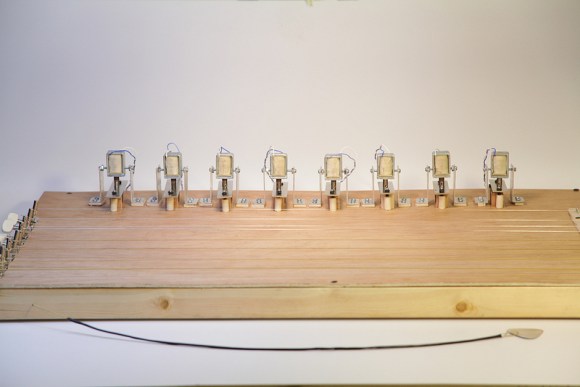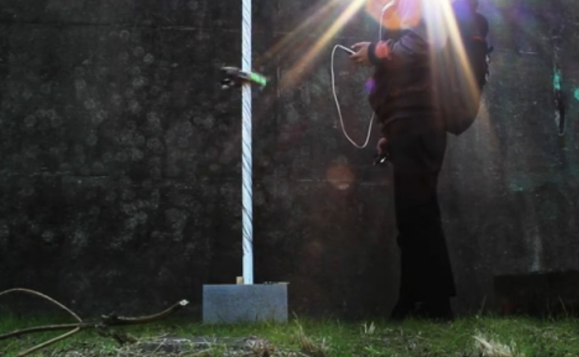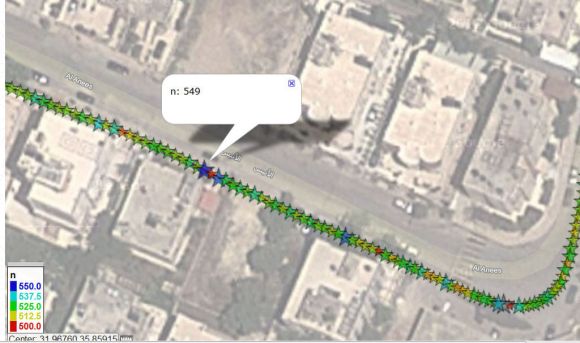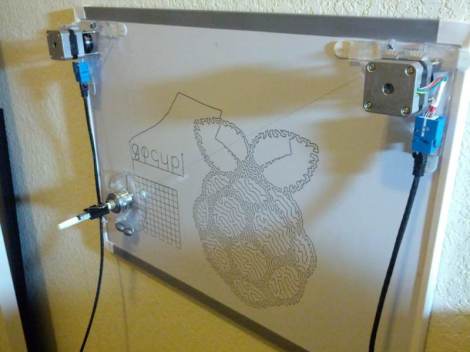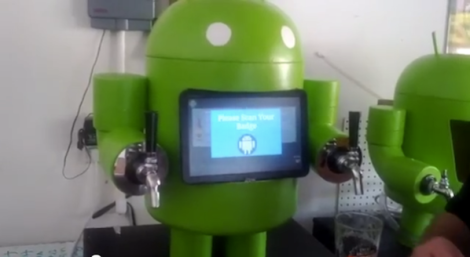This unique electronic instrument combines a chopped up guitar and a hacked apart glockenspiel with an Arduino. [Aaron]’s Glockentar consists of guitar hardware and glockenspiel keys mounted to a wood body. Solenoids placed above the keys actuate metal rods to play a note.
Under the hood, an Arduino connects the pieces. The conductive pick closes a circuit, which is a digital input into the Arduino. This actuates the corresponding solenoid to play the glockenspiel key, and sends a character to a computer over serial.
On the computer, an openFrameworks based program creates lighting that is projected onto each string. MadMapper is used for projection mapping, which maps the openFrameworks output to each string. Video is passed between applications using the Syphon framework.
[Aaron] has provided a write up that goes into details, including the Arduino and openFrameworks source for the project. There’s also a video overview and demo of the Glockentar after the break.
Continue reading “Glockentar: A Guitar + Glockenspiel Mashup”

